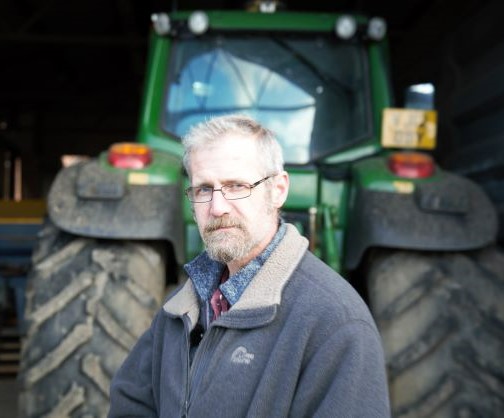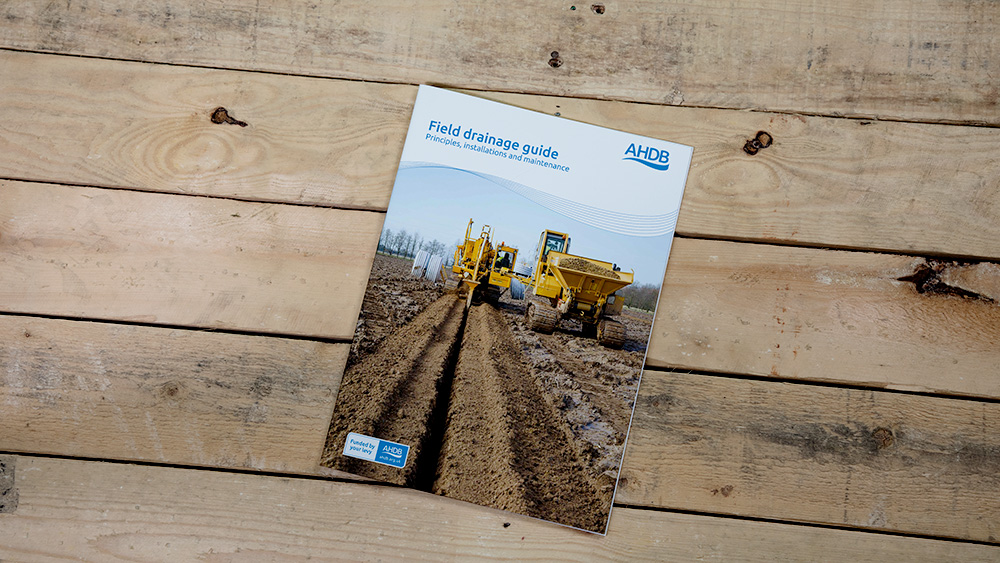- Home
- Knowledge library
- On-farm trials at Strategic Cereal Farm North (2022 to 2028)
On-farm trials at Strategic Cereal Farm North (2022 to 2028)
Summary
Host farmer: David Blacker
Location: Church Farm, Yorkshire
Duration: 2022–2028
AHDB Strategic Cereal Farms put cutting-edge research and innovation into practice on commercial farms around the UK. Each farm hosts field-scale and farm-scale demonstrations, with experiences shared via on-farm and online events to the wider farming community.
This page features a summary of information published in the latest annual report (harvest 2024) and the latest results webinar (harvest 2025).
Comparing foliar nitrogen with soil-applied nitrogen
This trial assessed the impact of foliar nitrogen timings (applied early and late) compared to soil applied nitrogen in a winter wheat crop.
Headlines
Generally, the 2023/24 growing season was wet.
Originally, the plan was to overlay the nitrogen treatments with reduced crop protection treatments to study the combined impact on plant diseases. As crop condition was poor, this element was dropped from the trial plan.
The treatment plan is published in this news item.
Compared to the foliar nitrogen treatments (both timings), the soil applied nitrogen resulted in a significantly higher number of fertile tillers/m2 and grains/m2.
Although early- and late-foliar nitrogen treatments resulted in lower yields, 0.8 t/ha and 0.5 t/ha respectively, these were not statistically different to the yield in the soil applied nitrogen treatment.
In all treatments, grain nutrient analyses indicated that nitrogen was likely to be limiting. This result is not surprising, given the challenging growing conditions.
Due to the overall higher nitrogen rates in the soil applied nitrogen treatment, it was associated with the highest greenhouse gas emissions.
Action points
- Always adapt nitrogen applications to the season, field and crop
- Information from in-season tests, such as tissue tests, and crop monitoring can guide revisions to nutrient management plans
- Grain nutrient analysis is a very useful way to gauge which nutrients may be limiting crop performance and guide future applications
Harvest 2025 plans
For harvest 2025, a second winter wheat trial will compare the farm standard nutrient programme with foliar micronutrients applied in response to in-season monitoring (including tissue analysis) and grain nutrient analysis results (from harvest 2024 samples). Once again, the plan is to overlay fungicide treatments.
Find out about the results in the harvest 2025 update video at the bottom of the page.
Using a clover understory to improve soil health
This trial investigates the impact of a permanent clover understory and compost applications on earthworm populations, soil nitrogen supply and crop performance.
Headlines
In 2023, wet weather delayed the establishment of this trial until 2024.
Before the trial started, earthworm and soil assessments (including VESS) were carried out.
Green compost (25 t/ha) was applied to half the field, with the other half receiving no compost.
Shortly after, a legume understory (various clover species) was drilled across two double tramlines.
Winter wheat was drilled for the 2024/25 cropping season.
Prior to drilling the wheat, neither the clover or compost treatments showed significant differences in nitrogen uptake or above ground biomass (compared to a weedy fallow with no compost, control).
The compost mainly provided phosphate and potash. It also benefited clover nodulation, indicating a higher nitrogen-fixation potential compared to those plants without compost.
Soil mineral nitrogen (SMN) was lower in the clover plots. Compost application had minimal impact on SMN in clover areas, but it reduced SMN in the no-clover (control) plots.
VESS and earthworm assessments will be repeated in spring 2025.
Action points
- Green compost can supply nutrients, particularly phosphate and potash, as well as organic matter
- Earthworms are a good indicator of soil health and regular monitoring can help assess the impact of management practices and guide interventions
- The use of a legume understory can provide valuable cover and may improve soil condition
- It can be a challenge to establish a cash crop in a legume understory in wet years
Harvest 2025 plans
This trial will continue until harvest, when final assessments will be made (including to the performance of the winter wheat crop).
Find out about the results in the harvest 2025 update video at the bottom of the page.
Investigating the benefit of new drainage installations
This trial investigated the impact of drainage approaches on winter wheat performance.
Headlines
In 2022 (between May and September), the trial field was redrained with lateral drains at 10, 15 and 20m intervals.
The drains cover lighter (clay loam) and heavier soil textures (clay).
One part of the field retained the old drainage system and another area was left undrained.
Wet conditions, from autumn 2023 to late spring 2024, impacted winter wheat establishment and spring growth.
At harvest, there was a clear impact of drainage, with crop yields 1.21 t/ha lower on the ‘no drainage’ area compared to areas that had the new drainage system (the areas had similar soil texture).
In autumn 2024, mole drains were added to two tramlines in the ‘new drainage’ zone. The intention is to improve lateral movement of water to the pipe drains.
Measurements will help reveal the effectiveness of different drain spacings and mole drains at reducing water table height.
Action points
- Assess fields for evidence of poor drainage
- This can include looking for ponding on the soil surface or saturated topsoils
- Issues below the surface may not be obvious but often manifest in poor crop growth and yields
- Refer to the AHDB Field drainage guide for tips on how to monitor and improve drainage
Harvest 2025 plans
The drainage trial will continue into harvest year 2025, including assessments of soil nitrogen supply and crop performance.
Find out about the results in the harvest 2025 update video at the bottom of the page.
Harvest 2025 update
Watch this webinar for the latest findings and discover how the research is grounded, practical and shaped by real farming experiences.
You will hear from specialists on:
- Farm standard vs active nutrient management – what difference does it really make?
- Clover understories and compost – harnessing nature to boost earthworm numbers
- Upgrading drainage – see the effects on soil structure and crop health
See more videos from this farm (YouTube Playlist)
*Project costs
Costs cover investment to date (harvest 2023, 2024, 2025 and 2026 trials) and include VAT.



.JPG)

 inspecting wet soil.jpg)